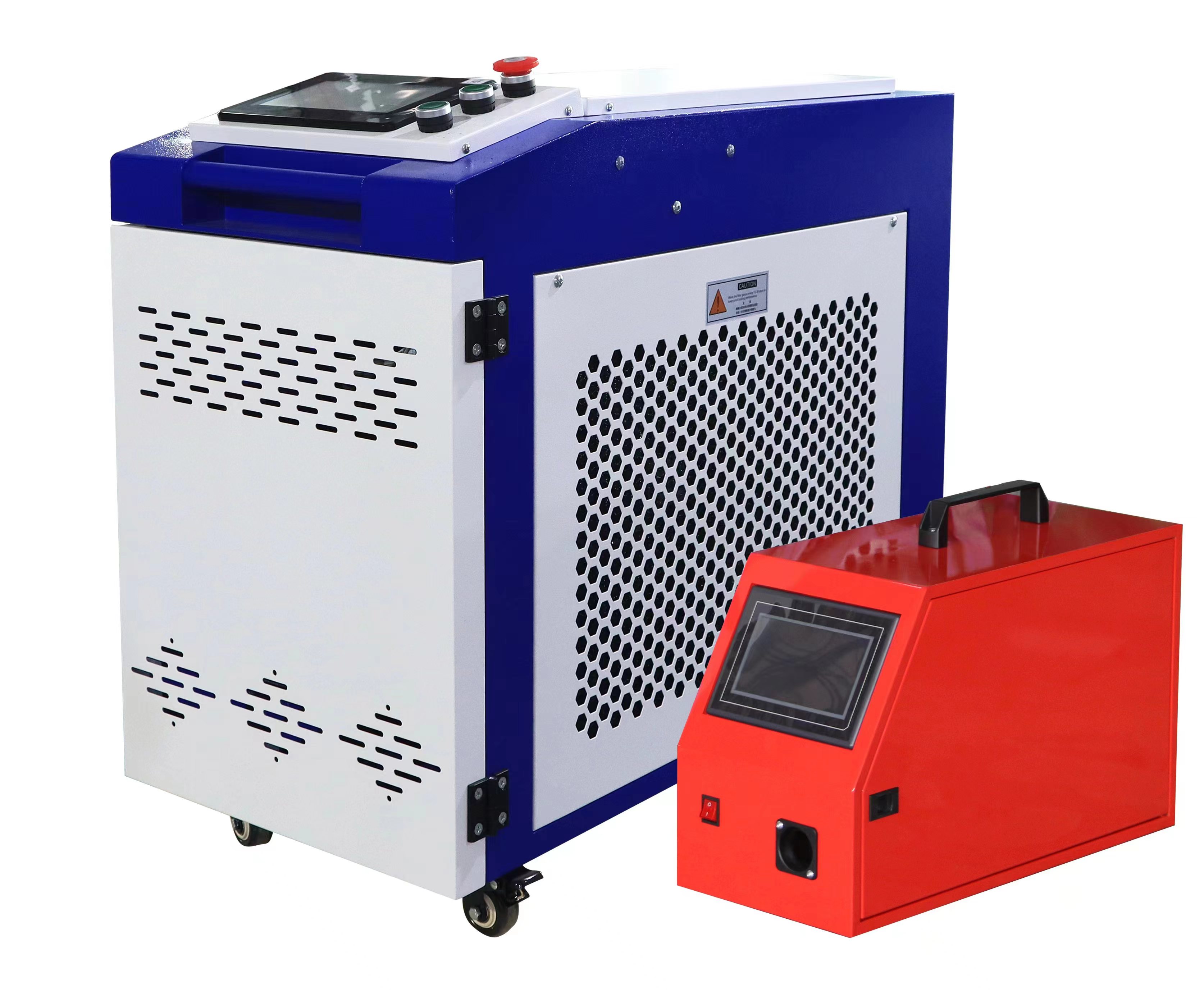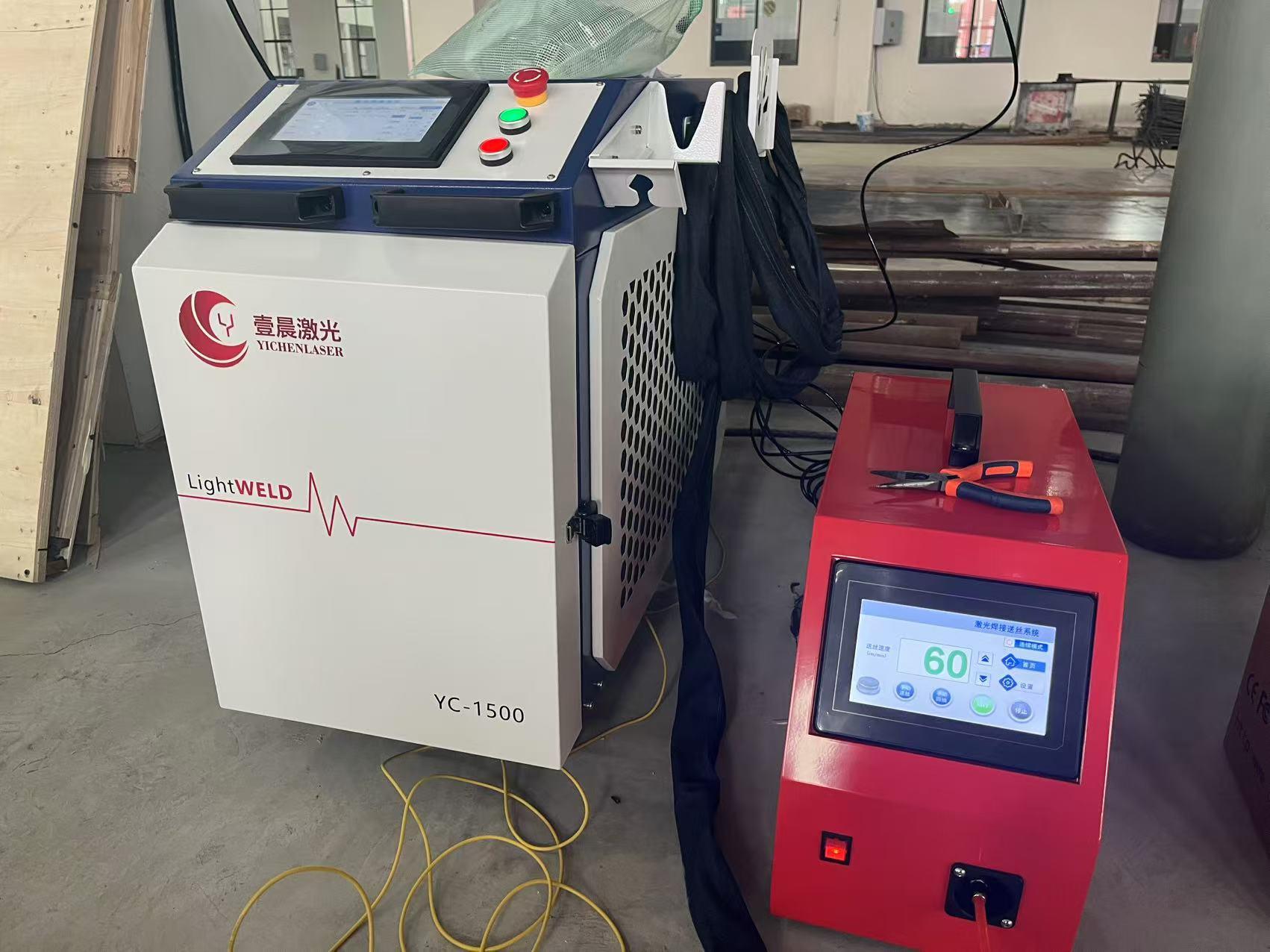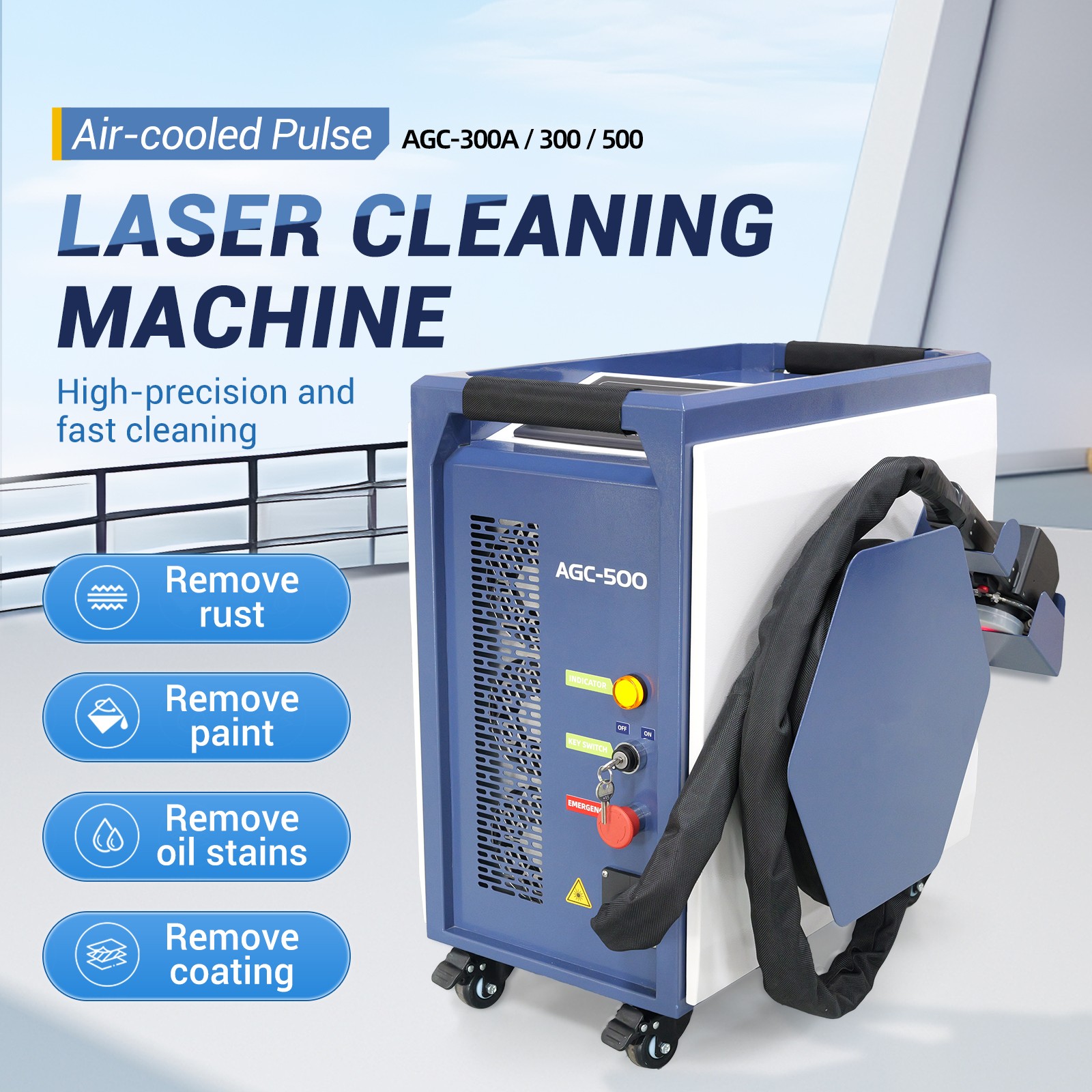As someone who’s spent over a decade working with industrial cleaning technologies, I’ve seen laser rust removal machines transform how we tackle corrosion and grime. These devices, with their pinpoint precision and eco-friendly approach, have become game-changers in industries from manufacturing to restoration. But when it comes to cleaning precision parts—think delicate gears, intricate molds, or sensitive electronics—many people hesitate. Can a laser, powerful enough to blast away rust, handle the finesse required for such components? Drawing from my experience with laser systems and real-world applications, I’ll explore this question in depth, offering practical insights, technical details, and tips to help you decide if a laser rust removal machine is right for your precision cleaning needs.

Understanding Laser Rust Removal: How It Works
Before diving into whether laser rust removal is suitable for precision parts, let’s break down how these machines operate. A laser rust removal machine uses a high-energy laser beam to vaporize rust, oxide layers, paint, or other contaminants from a surface. The process, known as laser ablation, involves:
Focused Energy: The laser beam targets the contaminant, heating it to the point of vaporization without melting the underlying material.
Selective Removal: Lasers can be tuned to remove only the unwanted layer (e.g., rust) while leaving the base material intact.
Non-Contact Cleaning: Unlike abrasive methods like sandblasting, lasers don’t physically touch the surface, reducing the risk of mechanical damage.
This non-contact, precise nature makes laser cleaning intriguing for delicate applications. But precision parts—like those in aerospace, medical devices, or high-tech manufacturing—have tight tolerances and sensitive surfaces. Can lasers meet these demands? Let’s explore.
Can Laser Rust Removal Machines Clean Precision Parts?
Yes, laser rust removal machines can clean precision parts, but it depends on the machine, settings, and part characteristics.
I’ve worked with clients in industries like aerospace and automotive, where precision parts such as turbine blades, injection molds, and micro-gears required cleaning without compromising their integrity. Laser cleaning excelled in many cases, but it’s not a one-size-fits-all solution. The suitability hinges on several factors:
Material Type: Lasers work well on metals (e.g., steel, aluminum, titanium) but require caution with softer materials like plastics or thin coatings.
Part Complexity: Intricate geometries or delicate surfaces demand precise control of laser parameters.
Contaminant Type: Rust, oxide, grease, or coatings respond differently to laser energy.
Machine Capabilities: Not all laser cleaners are created equal—high-end models with adjustable settings are better suited for precision work.
To illustrate, I once helped a client clean rust from a set of precision steel molds used in medical device manufacturing. The molds had intricate grooves and a polished finish that couldn’t tolerate scratches. Using a low-power pulsed laser, we removed the rust without affecting the mold’s surface or dimensions. However, in another case involving a thin aluminum part, improper settings caused slight warping, highlighting the need for expertise.

Key Considerations for Cleaning Precision Parts with Lasers
To determine if laser rust removal is appropriate for your precision parts, consider these critical factors:
1. Material Compatibility
Lasers are highly effective for metals commonly used in precision parts, such as:
Stainless Steel: Removes rust and oxides without damaging the surface.
Aluminum: Cleans effectively but requires lower power to avoid overheating.
Titanium: Ideal for aerospace parts, as lasers preserve surface integrity.
Plastics or Composites: Riskier, as high heat can cause melting or deformation.
My Tip: Always test the laser on a small, non-critical area of the part to ensure compatibility. For sensitive materials, use a pulsed laser with short bursts to minimize heat buildup.
2. Laser Type and Settings
There are two main types of laser rust removal machines:
Pulsed Lasers: Deliver short, high-energy pulses, ideal for precision cleaning as they minimize heat transfer to the substrate.
Continuous Wave Lasers: Emit a steady beam, better for heavy rust but riskier for delicate parts due to higher heat output.
Key settings to adjust include:
Power (Wattage): Lower power (e.g., 20-100W) for delicate parts; higher power (200W+) for heavy rust.
Pulse Frequency: Higher frequencies for smoother cleaning; lower for deeper penetration.
Beam Focus: A tighter focus for intricate areas; a wider beam for larger surfaces.
My Experience: In a project cleaning rust from a precision gear, a 50W pulsed fiber laser set to high frequency and low power cleaned the teeth perfectly without altering their dimensions. Incorrect settings, however, could have rounded the edges, ruining the gear.

3. Part Geometry and Tolerances
Precision parts often have complex shapes or tight tolerances (e.g., ±0.01mm). Lasers excel here because:
They’re non-contact, avoiding mechanical stress.
They can target specific areas, like rust in a groove, without affecting surrounding surfaces.
However, parts with deep recesses or reflective surfaces (e.g., polished chrome) may require specialized optics or multiple passes. I once cleaned a mold with tiny cavities using a laser with a galvo scanner, which allowed precise beam control to reach every nook.
4. Contaminant Characteristics
Lasers handle various contaminants differently:
Rust/Oxides: Easily vaporized due to their high absorption of laser energy.
Grease/Oil: Requires specific wavelengths (e.g., infrared) and may need pre-cleaning.
Coatings: Paint or anodized layers can be removed, but thick coatings may need higher power.
Case Study: A client needed to clean rust from a batch of micro-screws for electronics. The rust was light, and a low-power pulsed laser removed it in seconds per screw, preserving their threads perfectly.

Advantages of Using Laser Rust Removal for Precision Parts
Laser cleaning offers unique benefits for precision components:
Precision: Targets only the contaminant, preserving the part’s surface and dimensions.
No Abrasives: Unlike sandblasting or chemical cleaning, there’s no risk of scratching or residue.
Eco-Friendly: No chemicals or waste, making it ideal for industries with strict environmental regulations.
Versatility: Cleans rust, oxides, grease, and coatings in one process.
I recall a project where a client compared laser cleaning to sandblasting for aerospace turbine blades. The laser cleaned the blades without altering their aerodynamic profile, while sandblasting left micro-abrasions, requiring costly rework.
Limitations and Challenges
While lasers are powerful, they’re not perfect for every scenario:
Heat Sensitivity: Thin or heat-sensitive parts can warp if settings aren’t optimized.
Cost: Laser machines (starting at $5,000-$50,000) are pricier than traditional methods.
Skill Requirement: Operators need training to adjust settings for precision work.
Reflective Surfaces: Highly polished parts may reflect the laser, reducing effectiveness.
My Story: A client tried cleaning a polished copper part with a laser but struggled due to reflection. Switching to a shorter-wavelength laser and adjusting the angle solved the issue, but it underscored the need for expertise.

Step-by-Step Guide to Cleaning Precision Parts with a Laser Rust Removal Machine
If you’re considering laser cleaning for precision parts, here’s a practical guide based on my experience:
1. Assess the Part and Contaminant
Identify the material (e.g., steel, aluminum) and its tolerances.
Determine the contaminant type (rust, oxide, grease) and thickness.
Check for heat sensitivity or reflective surfaces.
2. Choose the Right Laser Machine
Opt for a pulsed fiber laser (20-100W) for precision parts.
Ensure the machine has adjustable power, frequency, and beam focus.
For intricate parts, use a galvo scanner for precise beam control.
3. Set Up the Machine
Power: Start low (e.g., 20-50W) to avoid overheating.
Pulse Frequency: Use high frequency (50-100 kHz) for smooth cleaning.
Beam Size: Adjust for the part’s size—small for details, larger for flat areas.
Test Run: Clean a non-critical area to fine-tune settings.

4. Perform the Cleaning
Secure the part in a stable fixture to prevent movement.
Use protective gear (e.g., laser safety glasses) and ensure proper ventilation.
Move the laser beam steadily, focusing on rusted areas. For intricate parts, use multiple passes at low power.
5. Inspect and Verify
Check the part for residual rust or damage using a magnifying glass or microscope.
Measure tolerances with a caliper or CMM (coordinate measuring machine) to ensure no dimensional changes.
Clean any vaporized residue with a soft cloth.
6. Post-Cleaning Care
Apply a protective coating (e.g., anti-rust oil) if the part will be stored.
Store the part in a dry, controlled environment to prevent re-rusting.
My Tip: For high-value parts, document the process (settings, before/after photos) to replicate successful results.
Comparison of Cleaning Methods for Precision Parts
To put laser cleaning in context, here’s how it stacks up against other methods:
| Method | Pros | Cons | Best for Precision Parts? |
|---|---|---|---|
| Laser Cleaning | Non-contact, precise, eco-friendly | High initial cost, requires skill | Yes, for delicate, high-value parts |
| Sandblasting | Fast, effective for heavy rust | Abrasive, can damage surfaces | No, risks micro-abrasions |
| Chemical Cleaning | Removes complex contaminants | Leaves residue, environmental concerns | Limited, residue can affect tolerances |
| Ultrasonic Cleaning | Gentle, good for intricate parts | Limited to small parts, requires liquid | Yes, but less effective for heavy rust |
My Experience: A client in the automotive industry switched from chemical cleaning to lasers for precision molds. The laser reduced cleaning time by 50% and eliminated chemical disposal costs, proving its value for high-stakes applications.

Practical Tips for Success
Based on years of working with laser systems, here are my top tips:
Start with a Test: Always test on a scrap piece or non-critical area to perfect settings.
Train Operators: Ensure staff are trained on laser safety and parameter adjustments.
Maintain the Laser: Clean the laser lens regularly and check cooling systems to ensure consistent performance.
Work with Experts: For critical parts, consult the laser manufacturer or a specialist for guidance.
Real Example: A watchmaker I worked with used a 20W pulsed laser to clean rust from vintage watch gears. With careful calibration, the laser restored the gears without affecting their intricate engravings, saving irreplaceable components.
When to Avoid Laser Cleaning
Laser cleaning isn’t ideal for:
Thin, Heat-Sensitive Parts: Risk of warping or melting.
Highly Reflective Surfaces: May require specialized lasers or coatings.
Low-Value Parts: If cleaning costs exceed part value, traditional methods may be more economical.
Case Study: A client tried cleaning a thin plastic component with a laser, resulting in deformation. We switched to ultrasonic cleaning, which was gentler for that material.

Conclusion: Lasers Are a Precision Powerhouse, with Caveats
To wrap up, laser rust removal machines can effectively clean precision parts, provided you choose the right equipment, adjust settings carefully, and understand the part’s material and tolerances. Their non-contact, precise nature makes them ideal for high-value components in industries like aerospace, medical, or electronics. However, success requires expertise, testing, and sometimes professional guidance. From my years in the field, I’ve seen lasers save countless precision parts from rust and ruin—when used correctly. If you’re considering this technology, start small, test thoroughly, and watch your parts shine again. Got questions or need advice on your specific application? I’m here to help!
Related Questions and Answers
Q1: What types of precision parts can be cleaned with a laser?
A: Lasers are ideal for metal parts like gears, molds, turbine blades, and screws in industries such as aerospace, automotive, and electronics. They’re less suitable for plastics or highly reflective surfaces without specialized equipment.
Q2: Is laser cleaning safe for parts with tight tolerances?
A: Yes, with proper settings (low power, high-frequency pulses), lasers preserve tolerances as they’re non-contact and don’t remove base material. Always test on a sample first.
Q3: How do I know if my laser machine is suitable for precision parts?
A: Check if it’s a pulsed laser with adjustable power (20-100W) and frequency. Machines with galvo scanners are best for intricate geometries. Consult the manufacturer for specs.
Q4: Can I clean precision parts myself with a laser?
A: If you have training in laser operation and safety, you can. For critical parts, work with a professional or test extensively to avoid damage.






